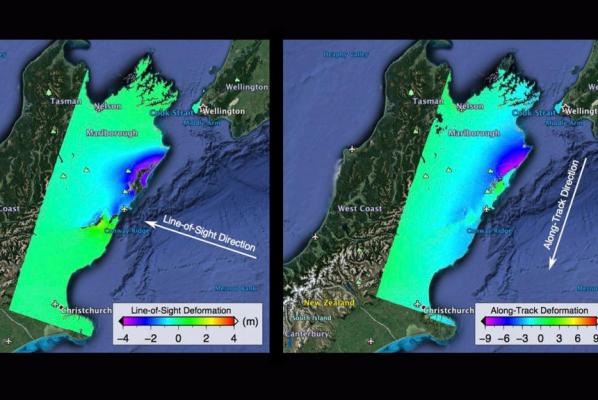
March 27 (UPI) — Each new earthquake offers scientists a chance to better understand the dynamics of regional fault systems and improve predictive analytics.
A team of NASA scientists and New Zealand researchers are using last year’s magnitude 7.8 Kaikoura earthquake to improve hazard models in the nation’s South Island.
By detailing the propagation of fault ruptures during a seismic event, scientists can better predict the behavior of future earthquakes. Seismic data revealed the presence of 12 major crustal faults that ruptured during the quake, as well as a slip along the Hikurangi fault line, the subduction zone off the east coast of New Zealand where the Hikurangi Plateau slides beneath the continental crust of the Indo-Australian Plate.
The Kaikoura earthquake began in the central-eastern region of the South Island known as North Canterbury. It spread northward 106 miles, with ruptures moving along both well-known and novel fault lines.
The most dramatic slip occurred along the Kekerengu fault. The rupture measured 9 miles deep with a vertical displacement of 83 feet and a horizontal displacement of 39 feet.
“This complex earthquake defies many conventional assumptions about the degree to which earthquake ruptures are controlled by individual faults, and provides additional motivation to re-think these issues in seismic hazard models,” Ian Hamling, a geodesy specialist at GNS Science, said in a news release.
The results of the new analysis — detailed in the journal Science — mesh with the revelations of earthquake experts globally, that hazard models are simplistic and limiting.
“Even in the New Zealand modeling context, the Kaikoura event would not have been included because so many faults linked up unexpectedly,” Hamling said. “The message from Kaikoura is that earthquake science should be more open to a wider range of possibilities when rupture propagation models are being developed.”
More complex models are being developed. And thanks to the improvement in seismic sensors and other monitoring tools, the next major earthquake is likely to provide a new wealth of model-shifting data.






